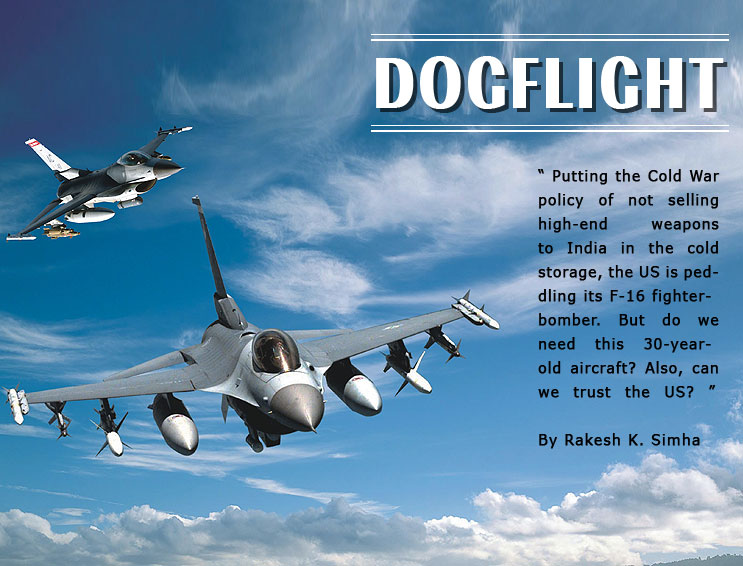| |
September 1992: 6,000 American jobs are at stake at the
Lockheed-Martin plant in Fort Worth , Texas , following the US Air Force's
decision not to order any more of the factory's main produce—F-16 Fighting
Falcons. For most workers, armed with few skills they can use outside the
defence industry, the future looks bleak. But with re-election time coming,
President George H. Bush isn't about to see so many workers line up for
dole in his home state. He clears an arms package to Taiwan , including
the sale of 150 Falcons, ensuring that the plant will run through 2008.
It's an entirely different story, however, that Bush Sr had to evict the
White House soon.
April 2005: That 2008 deadline is looming
near and again the jobs of those numerous Texans aren't looking safe at
all. These days, nobody needs an ageing aircraft. Did we say nobody? Well,
not quite. George W. Bush, reverses a 15-year-old policy and declares that
the US will sell F-16s to Pakistan . But the celebrations of the Pakistani
generals are cut short when Washington offers the aircraft to India as well.
Earlier this year, when India announced it was planning to buy 126 fighters to
replace its ageing MiG-21s and MiG-23s, the world armaments bazaar was
salivating—with the afterburners on. The Russians, the French and rank
outsiders, the Swedes, were preparing to start winning friends and influencing
people on Raisina Hill. But then the bombshell dropped: the US offered to sell
its F-16 fighters to India at $25 million each. In comparison, the Mirage 2000
costs upwards of $35 million and the Sukhoi-30 even more. It seemed an amazing
offer: one of the world's most acclaimed aircraft was being offered to India
at a cool markdown. The deal, said the Americans, would catapult India to
great power status and signal a tectonic shift in Indo-US ties.
Not everyone was impressed. At least, not the Indian defence establishment. “The US track record in supplying weapons is abominable. What if it holds
backs spares at a critical stage?” asked former air chief marshal A.Y. Tipnis.
According to a senior defence analyst, the induction of the F-16 would mean
additional expenditure for India in terms of setting up new maintenance
facilities. Apart from the nearly Rs 14,000 crore that India would spend
in buying the aircraft, another Rs 12,000 crore would be spent on mission
computers, weapons systems, engine testing bays, labs and so on.
But isn't the aircraft being described as an ace in
the air? Indeed, the F-16 is a result of the experiences gained by the US
Air Force in the Vietnam War where the highly acclaimed F-4 Phantoms were
brought down at an alarmingly high rate by Vietnamese pilots equipped with
MiGs. The F-16 has scored several kills in major battles. In the two Gulf
wars, the US Air Force used the F-16 with great effect and the planes
conducted thousands of sorties, destroying valuable Iraqi targets.
Except that the opponent was a backward Third World country whose
combatants at best had second-rate motivation.
In both Gulf wars, the thoroughly outnumbered Iraqi Air Force refused to ... |
|


